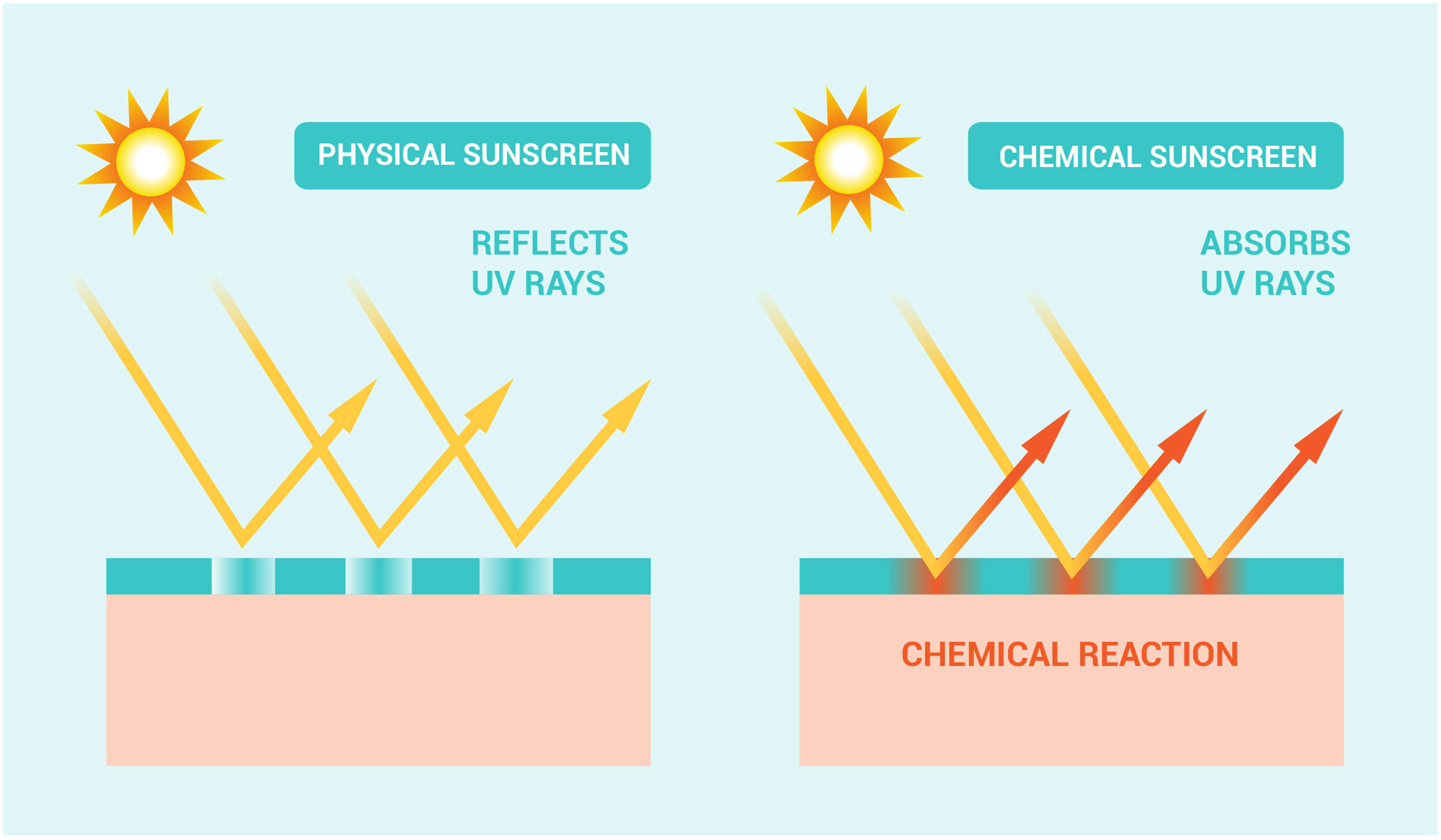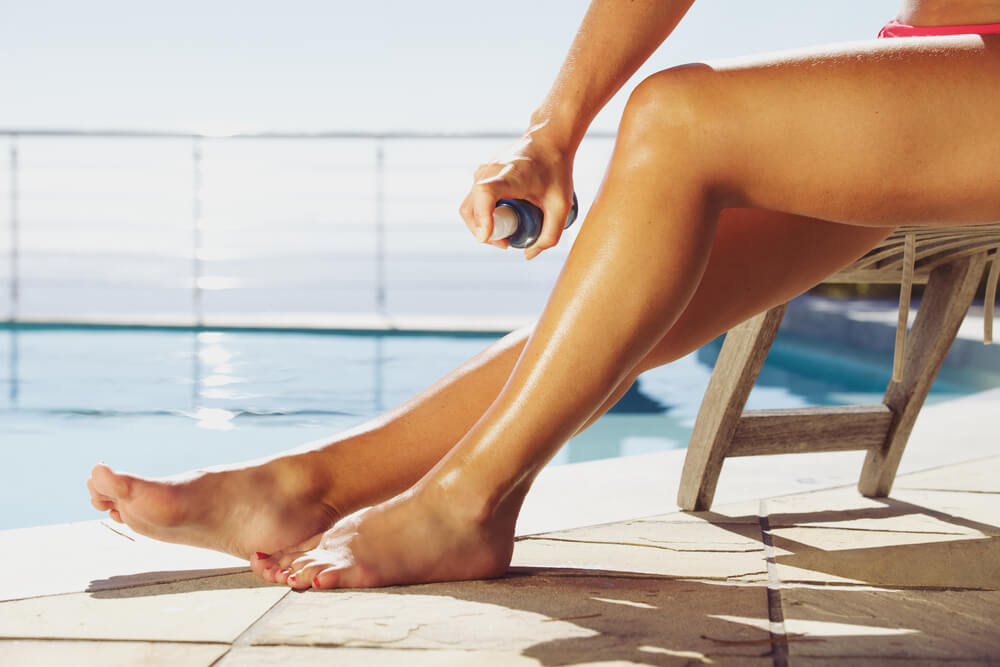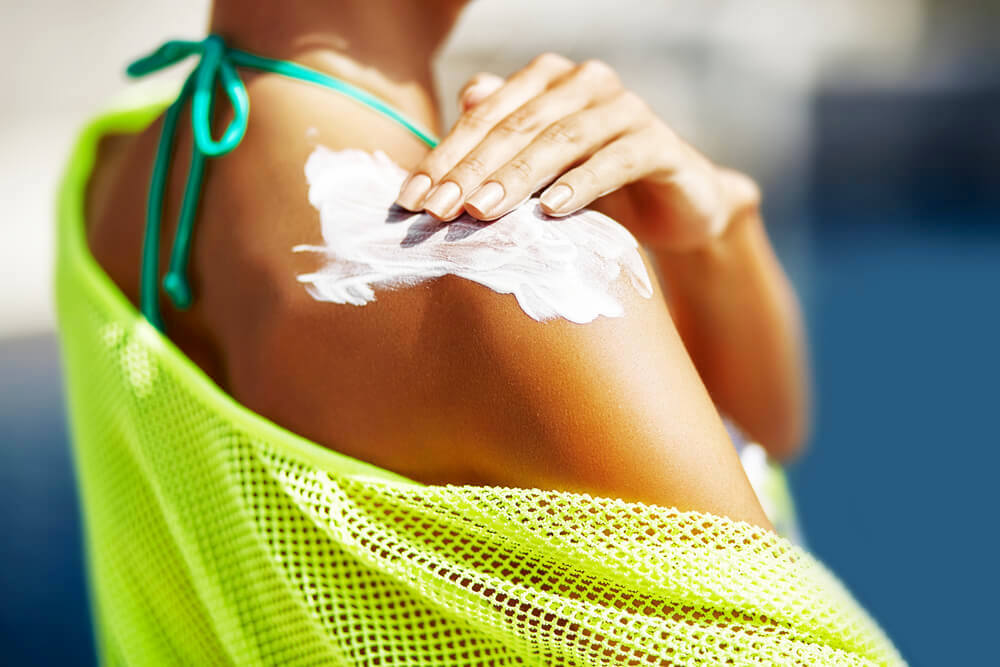Skin Care
How to Choose a Safer Sunscreen
Sunscreens have been in the headlines quite a bit recently…
New studies are emerging that point to the way in which the chemicals in sunscreens enter into the bloodstream at levels that could be quite dangerous. This could lead to hormonal imbalances and other problems, making it no surprise that people are now becoming increasingly conscious when choosing a sunscreen.
So, how exactly do you go about choosing a safer sunscreen?
Here are a few tips to help you out…
Go for Mineral Over Chemical

It may seem as though there are hundreds of different sunscreens out there, but these can all be divided into two main categories:
- Physical/Mineral Sunscreens – these are formulated with certain chemicals, such as zinc oxide and titanium dioxide, which reflect the sun’s UV rays away from the skin
- Chemical Sunscreens – these contain chemicals that absorb the sun’s UV rays. They then convert them into heat before releasing this heat back out through the skin
Chemical sunscreens are quite thin and lightweight, making them easy to spread over the skin.
However, the chemicals used within them can often irritate the skin, resulting in sensitivities and a stinging sensation. These are the chemicals that have also put sunscreens under scrutiny in the media, with this chemicals being found in the bloodstream long after the sunscreen has been applied.
The way in which chemical sunscreens create heat within the body can also exacerbate inflammatory skin conditions, from rosacea to acne to eczema.
Another downside to chemical sunscreens is that they take a little while to activate. You will usually need to wait for around 20 minutes before they begin to work, but this is a warning that many ignore, meaning that your skin will be receiving quite a bit of sun exposure before your sunscreen actually kicks in. Mineral sunscreens do not have that problem, as they begin to work as soon as they have been applied.
So, if you are trying to choose a safer sunscreen, your best bet would be going for a mineral formula, rather than a chemical formula.
Check for Both UVA and UVB Protection
The sun emits three types of UV rays, although you only really need to worry about two of them:
- UVA rays – these are the rays that are primarily responsible for skin aging, in the form of wrinkles, dark spots and sagging skin, while also being the rays that cause your skin to tan. UVA rays also play a small role in the development of skin cancers
- UVB rays – these are the rays that burn you, causing damage to your skin’s outer layers. UVB rays are the ones that are mostly responsible for skin cancer, but do also play a small role when it comes to skin aging, as well as tanning
- UVC rays – these are filtered by the atmosphere before they actually reach the surface of Earth, meaning that you do not need to worry about them
Now, when it comes to sunscreens, SPF is usually the main thing that people pay attention to.
However, SPF only measures UVB protection, not UVA…
If you want to check how well a sunscreen is going to protect you from UVA rays too, you will need to look out for its star rating. These stars indicate UVA protection, with the rating being out of five.
Ideally, you want a star rating of around four or five, along with an SPF rating of at least 30. This will ensure that your skin is gaining sufficient protection from the sun.
Know Which Ingredients to Avoid
It was mentioned earlier that physical or mineral sunscreens tend to be safer than chemical sunscreens.
However, if you still, for whatever reason, need to use a chemical sunscreen, there are certain ingredients that you should try to avoid as much as possible.
Even if you use a physical sunscreen, keep reading on, as you may still find a few of these ingredients on your sunscreen’s ingredients list:
- Oxybenzone – this is one of the most worrying, but commonly used, sunscreen ingredients, as it remains in the body for an unknown length of time and has been linked with a number of hormone-related problems. In fact, over 96% of Americans are contaminated with oxybenzone. This ingredient is also highly damaging to the environment, degrading and bleaching coral reefs all over the world
- Homosalate – another popular ingredient in chemical sunscreens, homosalate is a proven hormone disrupter
- Octinoxate – this chemical filter was banned in Hawaii due to the way in which it was damaging the local ecosystems and harming aquatic life. When it is absorbed into the body, it interferes with the way in which the hormones work
- Methylisothiazolinone – this popular chemical filter is a known allergen. It has been banned in Europe but is allowed to be used in cosmetics in the USA
- Vitamin A – this ingredient may be great for repairing sun damaged skin cells, but it breaks down when it comes into contact with sunlight, making it an ingredient best saved for nightly use. Recent research has also found that vitamin A can speed up the growth of cancerous cells when used on the skin during the day, and it can also trigger the growth of free radicals, which cause even more damage to the skin
- Polyunsaturated oils – oils such as rose hip, almond, grape seed, sesame and sunflower can react with UV light, which can result in quite a bit of skin damage. However, if the oils are listed towards the end of an ingredients list, then this means that they have been used in a very low concentration, and are unlikely to cause too many problems
Know Which Ingredients Are Beneficial
Understanding which sunscreen ingredients to avoid is important, but it is just as vital to know which ones are beneficial, so that you know which ingredients to keep an eye out for.
Here are a few ingredients that you would want to see in your sunscreen:
- Titanium Dioxide – if you have decided to go for a mineral sunscreen, titanium dioxide is the key ingredient to look out for. Although many mineral sunscreens contain zinc oxide too, titanium dioxide is the mineral that provides protection against both UVA and UVB rays
- Green Tea Extract – not only does this soothe and heal the skin, but it also provides some protection from the sun’s UV rays. Drinking green tea can boost this even further
- Vitamin E – protects skin cells from the mutations that can occur when they are exposed to the sun. This is an ingredient that is also effective at protecting from the harmful effects of pollution too
- Vitamin C – provides some extra UVB protection. When combined with vitamin E, the two vitamins become even more powerful, as they support each other’s functions
Be Careful with Spray-On Sunscreens
Spray-on sunscreens are so popular – after all, what could be more convenient?
While spray-on sunscreens may seem great, these are products that you may actually want to avoid.
Why?
Firstly, because of safety reasons…
The ingredients used in sunscreens have been tested extensively on the skin, even those that have been used in spray-on sunscreens.
However, testing them when it comes to inhalation is another matter…
Sunscreens contain a number of different chemicals, propellants and filler ingredients, some of which could actually be quite dangerous to inhale.
Of course, you would not be actively trying to inhale your sunscreen, but, when you spray this around your head, some inhalation is going to be unavoidable.
If you are able to get past that, another problem with spray-on sunscreens is that people usually do not actually use enough of the product on their skin.

Many people think that quickly spritzing a light layer of their spray-on sunscreen over their skin is all they need to do, but this is not the case at all…
The correct way to apply a spray-on sunscreen is by spraying large amounts of it onto your skin, until your skin has become fully saturated. You are then meant to use your hands to rub this product into your skin, ensuring that it is being spread evenly.
When it comes to the face, the majority of spray-on sunscreens out there would recommend that you spray the sunscreen onto your hands first, before applying it onto your face.
Why?
Likely due to the fact that it is not safe to inhale those ingredients!
When you take all of that into account, spray-on sunscreens are not actually that convenient after all. Do yourself a favor and go for a more traditional lotion sunscreen instead.
Consider a Water-Resistant Formula
Do you love outdoor activities?
For anyone who sweats quite a bit in the summer, a water-resistant sunscreen may be worth considering. The same applies to those who frequently swim in the summer, as this can quickly wash away a standard sunscreen formula.
However, remember that even if a sunscreen is water-resistant, it will still only last for between 40 to 80 minutes after your skin has gotten wet.
The exact length of time that it will last for should be stated on the bottle.
Can’t find this number?
Then you would be best off going for a different sunscreen.
Just like with the other sunscreens out there, a water-resistant sunscreen will still need to be frequently re-applied through the day, even more so if your skin is regularly getting wet.
Make sure that you are applying the right amount, as studies have found that 67% of people don’t use enough sunscreen when they are applying it to their skin.
This means that your sunscreen will not be able to provide the SPF protection stated on the bottle, which leaves your skin susceptible to the many different forms of damage the sun’s UV rays can cause.
How much sunscreen should you be using?
Keep these guidelines in mind:
- The face – half a teaspoon
- The arms and legs – one teaspoon for the arms, and one each for each leg
- The torso – two teaspoons
Take Other Sun-Protecting Measures Too
There is no sunscreen out there that is able to provide your skin with 100% protection from the sun, and this is something that you need to keep in mind when choosing a sunscreen.
Going for an ultra-high SPF rating is not going to make much of a difference.
Instead, if you really want to give your skin some additional protection, you need to be taking some other sun-protecting measures too, alongside using a sunscreen.
Wondering how else you should be protecting your skin from the sun?
Here are a few tips:
- Stay in the shade during the sun’s hottest hours – this is usually between 11am and 3pm, although this does vary depending on where in the world you are. Staying in the shade does not mean that you have to go inside – anything from a large tree to an umbrella can keep your skin shaded from the sun, and still enable you to be outdoors
- Wear sun-protecting accessories – everything from large sunglasses to a wide-brimmed hat can help to give your face some extra protection
- Keep your skin covered up with clothing – it may be tempting to bare it all in the sun, but keeping your skin covered up with clothing provides an additional barrier between your skin and the sun

Taking those additional steps will make a huge difference when it comes to protecting your skin from the sun, no matter which sunscreen you choose.
Your sunscreen is a product that you really should be wearing every single day throughout the year, re-applying it multiple times through the day if necessary. So, it only makes sense to take some extra time when choosing a sunscreen, so that you can ensure that your decision is one that is safe and beneficial for your skin.



